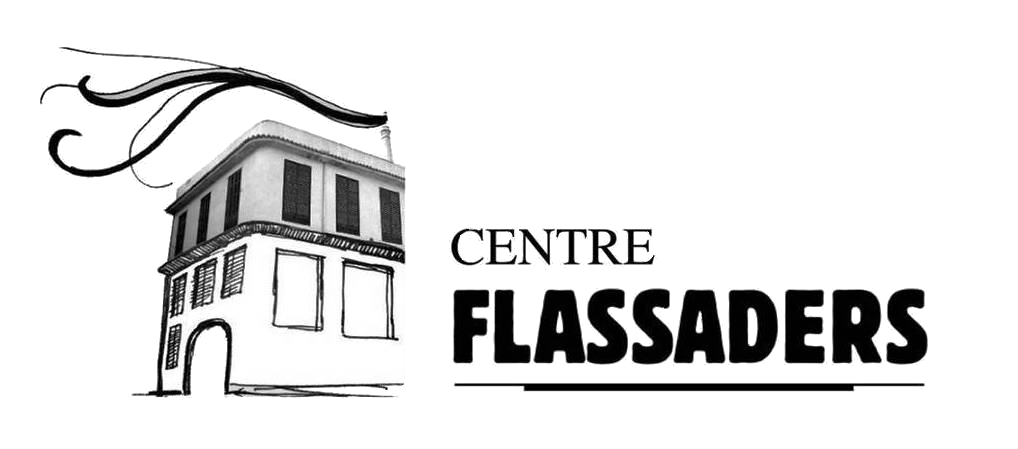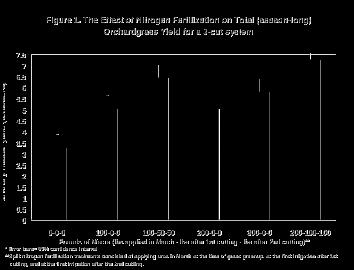powerpluswatermarkobject3 nonprint sources of information support document frank baker media education consultant fbaker
PowerPlusWaterMarkObject3
Nonprint Sources
of Information
Support Document
Frank Baker
Media Education Consultant
[email protected]
Note: The author of this document maintains the Media Literacy
Clearinghouse Web site, www.frankwbaker.com where teachers can locate
additional resources, lesson plans, activities, and books related to
Media Literacy.
Connections between the Guiding Principles of the South Carolina
English Language Arts (ELA) Academic Standards 2008, the South
Carolina ELA Standards, and the IRA/NCTE Standards and Nonprint
Sources of Information
Guiding Principles from the South Carolina English Language Arts
Academic Standards
Guiding Principle 8
An effective English language arts curriculum provides for literacy in
all forms of media to prepare students to live in an information-rich
society.
The skills of critical inquiry—the ability to question and analyze a
message, whether it be textual, visual, auditory, or a combination of
these—are a crucial element in literacy instruction. The production of
visual media is also a crucial element enabling students to acquire
and demonstrate an understanding of advertising, aesthetic techniques,
audience, bias, propaganda, and intellectual purpose. Integrating into
the ELA curriculum the vocabulary and skills associated with media
presentations helps students develop lifelong habits of critical
thinking.
Guiding Principle 9
An effective English language arts curriculum emphasizes informational
text that is relevant to our increasingly complex and technological
world.
Today’s students are confronted with unprecedented amounts of
information in a wide variety of print and nonprint forms. The ability
to locate and use information effectively is an essential skill in the
modern world. In many instances, information comes in unfiltered
formats. Consumers of information must raise questions about the
authenticity and reliability of sources. Now, more than ever, students
need to be prepared to comprehend, analyze, and challenge what they
read, hear, and see before making assumptions about its validity.
Real-world texts are an integral and vital part of the ELA curriculum.
South Carolina ELA Standards
Standard 1 The student will read and comprehend a variety of literary
texts in print and nonprint formats.
Standard 2 The student will read and comprehend a variety of
informational texts in print and nonprint formats.
Standard 5 The student will write for a variety of purposes and
audiences.
Standard 6 The student will access and use information from a variety
of sources.
IRA/NCTE Standards Which Address Nonprint Sources of Information
http://www.readwritethink.org/standards).
Standard 6 Students apply knowledge of language structure, language
conventions (e.g., spelling and punctuation), media techniques,
figurative language, and genre to create, critique, and discuss print
and nonprint texts.
Standard 8 Students use a variety of technological and information
resources (e.g., libraries, databases, computer networks, video) to
gather and synthesize information and to create and communicate
knowledge.
The above information serves as the basis for supporting the use of a
variety of print and nonprint sources of information during language
arts instruction.
.
Definition of Nonprint Sources
Sources of information that are not primarily in written form (for
example, pictures and photographs, television and radio productions,
the Internet, films, movies, videotapes, and live performances). Some
nonprint sources (for example, the Internet) may also contain print
information.
Media Literacy – An Introduction and Brief Background
Teachers may wish to introduce Media Literacy by familiarizing older
students with the five core concepts of Media Literacy:
*
All media are constructions.
*
Media are constructed using unique languages with their own set of
rules.
*
Media convey values and points of view.
*
Audiences negotiate meaning. Different people see the same media
message differently.
*
Media are primarily concerned with power and profit. (Source:
Center for Media Literacy, http://www.medialit.org)
The following questions may be used as students consider various ways
media messages are comunicated.
Critical Thinking and Viewing Considerations:
*
What do I need to know in order to best understand how this was
created and what it might mean?
*
Who created this (message) photograph? (Authorship)
*
Why is the (message) here? (Purpose)
*
In what ways might the image complement the text and vice versa.
*
Who is most likely to see the (message) photograph? (Audience)
*
What methods are used to make the (message) photo believable;
trustworthy? (Techniques)
*
Is there something outside the frame I don’t see? (Omission)
*
Can I make any assumptions about this (message) image?
*
Where might I get additional information not contained in the
(message) image? (Research)
*
What does the producer/creator/photographer want me to think/feel?
(Knowledge, Understanding)
*
How might others see this same (message) image differently from
me?
General Text Recommendation:
Asking The Right Questions: A Guide to Critical Thinking (8th Ed.)
Prentice-Hall
Authors: M. Neil Browne, Stuart M. Keely
Companion website: http://wps.prenhall.com/hss_browne_askingquest_8/
Media Literacy: Reading the Visual and Virtual Worlds (Chapter 13, pp
336-349), in The English Teacher's Companion A Complete Guide to
Classroom, Curriculum, and the Profession (3rd Ed) Jim Burke,
Heinemann
TeachingMediaLiteracy.com, Richard Beach, Teachers College Press
Introduction to Media Literacy (Elements of Language, HRW)
http://go.hrw.com/eolang/medialit/
Asking questions
One of most effective ways of approaching nonprint sources is by
having students ask questions. It starts at the earliest of ages: “Kindergarten
students generate how and why questions about topics of interest. They
understand how to use print and nonprint sources of information. They
classify information by constructing categories.” This is the start of
critical thinking and critical viewing, both of which are part of what
is now known as “media literacy.”
To help students understand how nonprint sources work, it may be
helpful to start by first teaching students about photographs/images;
then move to print advertisements which incorporate images; lastly on
to moving images (commercials, TV, film). Since visual literacy is a
large part of the arts curriculum, you may wish to collaborate with an
art teacher on helping students understand this concept.
Photograph and Pictures (Visual Literacy)
Photographs, pictures and other images exist everywhere in the world
of our students. From books, to magazines, newspapers and billboards,
images are a big part of their world. What do we want students to know
and understand about visual images? How do students derive meaning
from what they view? Students should recognize that photos/images are
texts too, non-print texts. And like all texts, they need to be
studied and understood for how they are created to make meanings. This
can start in elementary school with picture books and helping students
understand how images can be “read.” Photographers/image makers use a
number of techniques to create pictures. Those techniques include
color, framing, focusing, depth-of-field, perspective (point-of-view)
and more. Viewers of photos/images bring prior knowledge, experience
and more to these texts. Since photos can also be digitally alerted,
it is important for students to be able to question images, much the
same way as they do traditional texts.
Additionally, photos and other images can be catalysts to help
motivate students’ writing.
Instructional Resources: Grades 3-8
Websites (Grades 3-8)
Teacher Texts
(Grades 3-Grade 8)
Reference Articles
Visual Literacy and Picture Books: An explanation of how visual
literacy can be used to enhance classroom literacy programs
http://www.teachers.ash.org.au/bookzone/vislit.html
Reading Picture Books
http://www.learnnc.org/lp/pages/669
===============================================================
Word and Image
(TIME Magazine Teacher Guide: The Language of Photography)
http://www.time.com/time/teach/archive/981012/text5.html
==========================================================
Introducing Photography Techniques: Some Basic Vocabulary for Teaching
Kids
http://www.youthlearn.org/learning/activities/multimedia/photo3.asp
Critically Viewing Photographs (SCDE Lesson Plan)
http://ed.sc.gov/agency/offices/cso/standards/ela/CriticallyViewingPhotographs.doc
Reading Images (Chapter 7), from Illuminating Texts: How To Teach
Students to Read the World, by Jim Burke, Heinemann
Photography: Media Sources (Creative Education) 2008
=================================================================
Reading Photographs to Write With Meaning and Purpose, Grades 4–12
(IRA)
http://marketplace.reading.org/products/tnt_products.cfm?Subsystem=ORD&primary_id=612&product_class=IRABOOK&action=Long
I Wanna Take Me A Picture: Teaching Photography and Writing to
Children
http://shopdei.com/amla/catalog.php?product=61&parent=
Literacy Inquiry and Pedagogy through a Photographic Lens
(Volume 85, Number 6, July 2008, Language Arts, NCTE)
Show Me: Principles for Assessing Students' Visual Literacy (Artistic
elements were the focus of lessons on reading and responding to
literature in one third-grade class) (p 616, Reading Teacher, May
2008)
"Reading" The Painting: Exploring Visual Literacy in the Primary
Grades. (p 636, Reading Teacher, April 2007)
Meeting Readers: Using Visual Literacy Narratives in the Classroom
(Voices From The Middle, NCTE, September 2006)
Visual Literacy (p 60, Childhood Education, Fall 2005)
Instructional Resources: Middle and High School
South Carolina
Textbook Correlation
Websites
(Grades 6-English 4)
Teacher Texts
(Grades 6-English 4)
Videos
(Grades 6- English 4)
Visuals & Graphics, Interpreting
Elements of Language, 2nd Course (HRW) pp 785-786
Still Photography
(Chapter 12)
Elements of Language, (HRW) Media Literacy & Communication Skills,
pp 113-126
Information Graphics
(Chapter 10)
Elements of Language, (HRW) Media Literacy & Communication Skills,
pp 87-98
Examining Photographs,
p 580, American Pathways to the Present: Modern American History
(2005, Prentice Hall)
Interpreting Images,
p. 461, American Odyssey, The US in the 20th Century (1999,
Glencoe-McGraw Hill)
Teaching Strategies: Photography Project (Part of the series: Teaching
Multicultural Literature)
http://www.learner.org/channel/workshops/tml/workshop8/teaching3.html
Reading A Photograph or a Picture
http://wwwfp.education.tas.gov.au/english/vislit.htm
Questioning Photographs
(A list of questions)
http://www.frankwbaker.com/questioning_photos.htm
Reading Photographs
(Using questions to decode, evaluate, and understand photographic
images) http://www.learnnc.org/lp/pages/677
Reading Media Photographs
http://www.noodletools.com/debbie/literacies/newsmedia/polphotos.html
How Framing Affects Understanding
http://www.frankwbaker.com/framing.htm
Is Seeing Believing? (Learning to Question Images) (This site includes
famous Civil War photographs and background)
http://www.frankwbaker.com/isb.htm
Photography: Be A Media Critic (Knowitall.org)
http://www.knowitall.org/sites/artopia/media/artcritic/photography/index.html
Sources for Photographic Images: Current News Images
http://news.yahoo.com
Documentary Photography and Film (From the Series: American Passages:
Unit 12 Migrant Struggle)
http://www.learner.org/amerpass/unit12/context_activ-2.html
Library of Congress: Photographic Images from US History
http://www.loc.gov/rr/print/catalog.html
History of South Carolina Slide Collection (Knowitall.org)
http://www.knowitall.org/schistory/
Caroliniana Collections (Knowitall.org)
http://www.knowitall.org/caroliniana/caroliniana.htm
Reading Images (Chapter 7), from Illuminating Texts: How To Teach
Students to Read the World, by Jim Burke, Heinemann
Media Literacy; Reading the Visual and Virtual Worlds (Chapter 13, pp
336-349), in The English Teacher's Companion A Complete Guide to
Classroom, Curriculum, and the Profession (3rd Ed) Jim Burke,
Heinemann
Visual Literacy: Learn to See, See to Learn, Lynell Burmark (ASCD)
http://shop.ascd.org/productdisplay.cfm?productid=101226
Image Matters: Visual Texts In the Classroom
http://shopdei.com/amla/catalog.php?product=45&parent
Teaching the Visual Media, Peter Greenaway (Jacaranda Books,
Australia)
Photos That Changed The World (Publisher: Presetl)
100 Photographs That Changed The World (Life Magazine)
http://www.digitaljournalist.org/issue0309/lm_index.htm
Moments: The Pulitzer Prize-Winning Photographs: A Visual Chronicle of
Our Time (Tess Press)
ETV Streamline:
Introduction: Photography and Visual Images (00:54) Segment from the
Series: Lights, Camera, Education
Other videos:
Documenting The Face of America (PBS Special- Airdate Aug 18, 2008)
http://www.documentingamerica.org/Home.html
American Photography: A Century of Images (text and DVD; Shop PBS)
Language of Photography (Films for the Humanities and Sciences)
Editorial Cartoons
Editorial cartoons, in newspapers, magazines, and on the Internet, are
another rich source of visual material that students should be exposed
to and understand. Like photographs, they can be “read” as visual
texts in order to be better understood. Not only should students
analyze (read) editorial cartoons, they should also be given
opportunities to create (produce) them as well. Author bias, prior
knowledge, symbolism, parody, humor, and irony can come into play as
students begin to identify these concepts via cartoons.
Instructional Resources: Grades 5-High School
South Carolina Textbook Correlations
(Middle and High School)
Websites (Grades 5-English 4)
Teacher Texts (Grades 5-English 4)
Interpreting Political Cartoons,
(Many scattered throughout the text) Magruder's American Government
(2005 Prentice Hall)
Editorial Cartoons, pp. 683;797 in World History: Connections To Today
(2005 Prentice Hall)
Interpreting Political Cartoons (Various scattered through the text)
US Government: Democracy In Action (2006, Glencoe)
Media Smart; Strategies for Analyzing Media (DVD Chapter: Editorial
Cartoons) McDougal-Littell
(To be considered as part of the 2008 ELA adoption)
Daryl Cagle's Editorial Cartoons http://cagle.msnbc.com/
Robert Arial (The State)
http://www.ariail.thestateonline.com
Analyzing Editorial Cartoons
http://712educators.about.com/cs/edcartoons/a/edcartoons.htm
Analyzing Editorial Cartoons (pdf) Chapter 7 Persuasion (Holt,
Rinehart, Winston)
http://web.archive.org/web/20060902015226/http:/go.hrw.com/elotM/0030526671/student/ch07/lg1407284_287.pdf
Cartoon Analysis Worksheet
http://www.archives.gov/education/lessons/worksheets/cartoon.html
Learning By Cartooning: Lesson plans and links for teachers
http://www.learningbycartooning.org
Using Editorial Cartoons to Teach about Elections (Education World)
http://www.educationworld.com/a_curr/curr210.shtml
ReadWriteThink: Analyzing the Stylistic Choices of Political Cartoons
http://www.readwritethink.org/lessons/lesson_view.asp?id=923
Analyzing Political Cartoons
Chapter 8, pp. 179-183, from
Building Literacy in Social Studies (ASCD, 2007)
The Best Political Cartoons of the Year, 2008 Edition
http://cagle.msnbc.com/news/BookPromo/ (earlier editions also
available)
Growing Up Cartoonist in the Baby-Boom South: A Memoir and Cartoon
Retrospective (Kate Salley Palmer)
Warbranch Press
http://www.warbranchpress.com/cartoonist.html
Dr. Seuss Goes to War: The WW II Cartoons of Theodor Seuss Geisel,
New Press (2001)
Herblock: A Cartoonist's Life,
Three Rivers Press (1998)
Arial View, The State Newspaper (1990)
Advertising: Commercials
Moving images, such as televised/streamed commercials, offer rich
material for young people to study. They contain “techniques of
persuasion/propaganda” which are also found in everyday life, not just
advertising. Every day, we are exposed to literally thousands of
messages, many of which are advertising and marketing. From toy ads to
political candidate messages, to car and food ads: all are easily
accessible via television and the web. These ads can be analyzed
(read) and created (produced) by students. Like print advertisements,
commercials offer teachers a chance to help young people better
understand “media literacy” as well as the “techniques of
persuasion/propaganda” and the “language of television ads.” If you
have the equipment and know how, students can also be encouraged to
create actual commercials. If you don’t have electronic equipment,
students can still create their own scripts and storyboards.
Instructional Resources: Grades 3-5
Teacher Texts
(Grades 3-5)
Websites (Grades 3-5)
Videos (Grades 3-5)
The Berenstain Bears and the Trouble with Commercials
(HarperCollinsChildrens) (April 2007)
Made You Look: How Advertising Works And Why You Should Know (Annick
Press) http://206.186.83.77/catalog/catalog.aspx?Title=Made+You+Look
also
http://www.annickpress.com/madeyoulook/index.htm
Advertising: Media Wise,
by Julian Petley, (Smart Apple Media, 2004)
Buy Me That: How TV Toy Commercials Hook Kids (SCDE Lesson Plan)
http://ed.sc.gov/agency/offices/cso/standards/ela/Grades3-5ToyCommercials.doc
Food Ad Deconstruction
(Learn how to read, analyze, and deconstruct print ads from magazines)
http://www.frankwbaker.com/foodaddeconstructions.htm
Lesson Plan: Food Ad Tricks (How food stylists make food look good
forTVhttp://www.frankwbaker.com/food_ad_tricks.htm
Don’t Buy It (PBS Kids) http://pbskids.org/dontbuyit
Streamline videos:
LifeSkills 101-Media Wise (Slim Goodbody)
Advertising (4:23) segment from Discovering Language Arts: Viewing
This segment presents a student-made cereal commercial and analyzes
the commercial's advertising techniques. A follow-up activity asks
students to create a commercial about a food or clothing item they
enjoy. (Teacher Guide Available)
Other videos
(Available for Purchase)
TV Planet
http://www.rmpbs.org/resources/files/programs/kids/tv_planet/index.html
Instructional Resources: Middle and High School
South Carolina Textbook Correlations
Videos
(Grades 6-English 4)
Websites
(Grades 6-English 4)
Teacher Texts/Periodicals
(Grades 6-English 4)
Media Smart Strategies for Analyzing Media (DVD Chapter: Star Wars-
Episode III Ads) McDougal-Littell
(To be considered as part of the 2008 ELA adoption)
Media Smart Strategies for Analyzing Media (DVD Chapter:
Daisy/America’s Back) McDougal-Littell
Media Smart Strategies for Analyzing Media (DVD Chapter: Advertising
In The Jazz Age) McDougal-Littell
ETV Streamline:
Advertising Images (4:24) segment from Discovering Language Arts:
Viewing. Television and film are full of images meant to convey a
viewpoint, through which media professionals attempt to appeal to
people's interests and desires. Images of attractive people can be
used as tools to sell clothing, beauty products, and athletic wear.
(Teacher Guide available)
Ad-Libbing It (22:03)
An irreverent look at how advertisers try to hook young people on
cigarettes and alcohol.
The Role of Television Advertising In Presidential Elections (1:10)
Skills for Healthy Living: Analyzing Media Influences (27:35)
Understand how different media affect the way we feel about ourselves
and influence the health choices we make.
English Composition: Writing for An Audience
(streamed online)
Program #17 Persuasion
http://www.learner.org/resources/series128.html
Available from ITV: (contact your media specialist or DELC operator)
Voices in Democracy HS Edition Program #10 Media & Elections
Other Videos (Online and Available or purchase)
TV Confidential (Grades 6-8)
http://www.rmpbs.org/resources/files/programs/kids/tv_confidential/index.html
Selling Children: How Media Affects Kids (Connect With Kids)
http://www.connectwithkids.com/products/sellingchildren.shtml
Merchants of Cool FRONTLINE/PBS (streamed online)
http://www.pbs.org/wgbh/pages/frontline/shows/cool
The Persuaders
FRONTLINE/PBS
(streamed online)
http://www.pbs.org/wgbh/pages/frontline/shows/persuaders/
Scriptwriting In The Classroom (PSAs, Commercials, News, Film)
http://www.frankwbaker.com/scriptwriting_in_the_classroom.htm
Print Advertisement
(HRM Elements of Language)
http://go.hrw.com/eolang/medscope/module2.htm
Techniques of Persuasion:
Deconstructing an Advertisement (Media Education Foundation)
http://www.mediaed.org/handouts/pdfs/DeconstructinganAd.pdf
Propaganda http://www.propagandacritic.com/
The Language of Advertising Claims
http://sunset.backbone.olemiss.edu/~egjbp/comp/ad-claims.html
Analyzing Presidential Candidates TV Commercials
http://www.frankwbaker.com/media_politics.htm
Political TV Advertisement (HRW, Elements of Language)
http://go.hrw.com/eolang/medscope/module1.htm
Critical Television Viewing Skills
http://www.frankwbaker.com/critical_tv_viewing.html
The Language of TV/Film: (Techniques of video production)
http://www.frankwbaker.com/tvl.htm
The Grammar of TV and Film
http://www.aber.ac.uk/media/Modules/TF33120/
Semiotics & Conventions of Television
http://130.18.140.19/mmsoc/chapter5.html
Storyboarding
http://torres21.typepad.com/flickschool/2007/12/storyboard.html
Create a Storyboard (Knowitall.org)
http://www.knowitall.org/sites/artopia/media/studio/storyboard/index.html
Blank Storyboard Form
http://www.frankwbaker.com/Blank_Storyboard_Form.pdf
Texts:
Media Literacy: Thinking Critically About Advertising, Publisher: J
Weston Walch http://www.walch.com/product/909
Made You Look: How Advertising Works And Why You Should Know (Annick
Press) http://206.186.83.77/catalog/catalog.aspx?Title=Made+You+Look
also
http://www.annickpress.com/madeyoulook/index.htm
Political Campaigns and Political Advertising: A Media Literacy Guide,
Greenwood Press, November 2008
http://www.greenwood.com/catalog/GR4755.aspx
Advertising: Opposing Viewpoints Publisher: Greenhaven Press
Periodicals (also available online):
Advertising Age http://www.adage.com
Ad Week
http://www.adweek.com
Motion Pictures: Understanding the Language of Film
Students love the movies and for the most part can talk intelligently
about them. But many students don’t fully understand that films are
also texts, which need to be read too. Films are rich texts with many
layers to study and appreciate. Even elementary students should be
asked: how are films made. Film makers have at their disposal a number
of technical/production tools that comprise the language of film:
cameras, lights, sound/music, editing, set design, to name a few.
Students should be encouraged not only to analyze (deconstruct) films,
but also to create and produce their own PSAs, videos, or films
(provided your school has video production and editing capability.)
Photo Story 3 (Windows) is free, user-friendly software that allows
students to create their own productions by adding narration or sound
to their images—thus making a “movie.” iMac computers come fully
loaded with easy-to-use movie creating software. If you don’t have
access to software, students can still create scripts, screenplays and
storyboards for visual productions. Students can also learn how to
write film reviews.
Instructional Resources: Grades 3-5
Websites (Grades 3-5)
Teacher Texts/Periodicals
(Grades 3-5)
Video (Grades 3-5)
Teacher’s Guide to Making Student Movies (Scholastic)
http://content.scholastic.com/browse/article.jsp?id=6758
How We Make A Movie
(Pixar Animation)
http://www.pixar.com/howwedoit/index.html
Media Arts Studio
(Knowitall)
http://www.knowitall.org/sites/artopia/media/studio/index.html
Texts:
Coming Distractions: Questioning Movies (Capstone Press: 2007
FactFinders Media Literacy series)
What Is Art? Movies
Barron's Educational Series (February 2004)
Film:
Media Wise
(Smart Apple Media 2004)
Periodical:
Reeling With Words (Writing Magazine, Feb/March 2007)
Available for purchase
Making Grimm Movies (Companion to From The Brothers Grimm series by
Davenport Films) 60 minute video divided into three parts
http://www.davenportfilms.com/pages/main_mgmpage.html
Instructional Resources – Middle and High School
South Carolina Textbook Correlation (Grades 6- E4)
--------------------------------------------------
Video Resources
(Grades 6-E4)
Teacher Texts
(Grades 6-E4)
Websites
(Grades 6-E4)
Motion Picture Photography (Chapter 13)
Elements of Language,
Media Literacy & Communication Skills
pp 127-136
Literature Grade 6,7, 8 (McDougal Littell)
(pp 150-151 Media Studies: Plot & Setting in Film)
Literature Grade 9, 10
(McDougal Littell)
(pp 130-131 Media Studies: Creating Suspense In Film)
(To be considered as part of the 2008 ELA adoption)
Media Smart Strategies for Analyzing Media (DVD Chapter: Sisterhood of
the Traveling Pants; Whalerider) McDougal-Littell
----------------------------------------------------------------------
Media Smart Strategies for Analyzing Media (DVD Chapter: Lord of the
Rings; The Cask of Amontillado;
The Birds; Romeo & Juliet) McDougal-Littell
Media Smart Strategies for Analyzing Media (DVD Chapter: Apollo 13;
Finding Forrester) McDougal-Littell
Media Smart Strategies for Analyzing Media (DVD Chapter: The Crucible;
An Occurrence at Owl Creek Bridge) McDougal-Littell
Media Smart Strategies for Analyzing Media (DVD Chapters: Camelot/King
Arthur; MacBeth; Gulliver’s Travels) McDougal-Littell
----------------------------------------------------------------------
ETV Streamline
The Power of Film; Visual Literacy (Two segments from the series
Lights, Camera, Education (Background on this series can be found at
the American Film Institute’s website:
http://www.afi.edu/intro/lce.aspx )
Fear Factor: Film Techniques;
The Medium is the Message: Film Style and Subject Matter—Segments from
Discovering Language Arts: Viewing (Grades 9-12)
Media Wise, by Julian Petley, (Smart Apple Media, 2004)
How To Read A Film, James Monaco
http://readfilm.com/books.htm
How to Read A Film (DVD) http://readfilm.com/HTRDVD.html
The Director in the Classroom How Filmmaking Inspires Learning
http://www.thedirectorintheclassroom.com/book4.php
Filmmaking for Teens: Pulling Off Your Shorts
by Troy Lanier and Clay Nichols Michael Wiese Productions
Girl Director A How-To Guide for the First-Time, Flat-Broke Film and
Video Maker, Ten Speed Press
Making Short Films (includes DVD) ISBN 1-58115-444-5 Allworth Press
Reading in the Reel World: Teaching Documentaries and Other Nonfiction
Texts
(NCTE) http://www.ncte.org/store/books/124789.htm
Great Films and How to Teach Them (NCTE)
http://www.ncte.org/store/books/117911.htm
Reading In The Dark: Using Film As A Tool in The English Classroom
(NCTE)
http://www.ncte.org/store/books/media/106296.htm
Reel Conversations: Reading Films with Young Adults
http://www.amazon.com/Reel-Conversations-Reading-Adults-Literature/dp/0867093773
Periodicals:
Student Filmmakers
https://www.studentfilmmakers.com/store/customer/home.php?cat=248
Total Film http://www.totalfilm.com
Script Magazine http://www.scriptmag.com
American Cinematographer http://www.theasc.com/
Screen Education (Australia)
http://www.metromagazine.com.au/screen_ed/index.html
Teacher’s Guide: Academy Award Series
http://www.oscars.org/teachersguide/index.html
Film Production:
Be A Media Critic
(Artopia: Knowitall.org)
http://www.knowitall.org/sites/artopia/media/artcritic/film/index.html
Cinema: How Hollywood Films Are Made (Annenberg)
http://www.learner.org/interactives/cinema/
Lights, Camera, Education (AFI)
http://www.afi.edu/intro/lce.aspx (also available via ETV Streamline)
American Cinema (Multi-part series streamed on-line)
http://www.learner.org/resources/series67.html
Documentary Photography & Film
(from the series American Passages: Unit 12 Migrant Struggle)
http://www.learner.org/amerpass/unit12/context_activ-2.html
The Story of Movies
http://www.storyofmovies.org/
IFC Film School: http://filmschool.ifc.com/index.jsp
Lesson Plan: Lights, Camera, Action...Music: Critiquing Films Using
Sight and Sound (Read, Write, Think)
http://www.readwritethink.org/lessons/lesson_view.asp?id=863
Scriptwriting In The Classroom (Resource covers Scriptwriting and
Storyboarding of PSAs, Commercials, News, Film)
http://www.frankwbaker.com/scriptwriting_in_the_classroom.htm
Writing About Film
http://www.dartmouth.edu/~writing/materials/student/humanities/film.shtml
How to Write A Movie Review
http://www.howtodothings.com/hobbies/a2206-how-to-write-a-movie-review.html
Movie Trailers as Persuasive Texts
http://www.frankwbaker.com/movie_trailers_as_persuasion.htm
Using Documentaries in The Classroom
http://www.frankwbaker.com/using_docs_in_the_classroom.htm
19
Revised August 1, 2008
 OCTOBER 2012 TEACHERS GUIDE FOR GRAPHENE THE NEXT WONDER
OCTOBER 2012 TEACHERS GUIDE FOR GRAPHENE THE NEXT WONDER TYÖNJAKOEHDOTUS ROMPETORILLA 2552019 TEHTY TARKISTA SOPIIKO VUORO SINULLE! MUUTOKSET
TYÖNJAKOEHDOTUS ROMPETORILLA 2552019 TEHTY TARKISTA SOPIIKO VUORO SINULLE! MUUTOKSET ODBOR KOMUNIKACE A PROPAGACE TISKOVÁ MLUVČÍ HISTORIE INFEKČNÍHO ODDĚLENÍ
ODBOR KOMUNIKACE A PROPAGACE TISKOVÁ MLUVČÍ HISTORIE INFEKČNÍHO ODDĚLENÍ BILAGA TILL ANMÄLAN OM RIVNING RIVNINGSPLAN BILAGA 1
BILAGA TILL ANMÄLAN OM RIVNING RIVNINGSPLAN BILAGA 1 NOM I LLINATGES TELÈFON EMAIL POBLACIÓ DATA DE LLIURAMENT
NOM I LLINATGES TELÈFON EMAIL POBLACIÓ DATA DE LLIURAMENT ECONOMICS OF NITROGEN FERTILIZATION BY ROB WILSON MS LASSEN
ECONOMICS OF NITROGEN FERTILIZATION BY ROB WILSON MS LASSEN P LAN PASTORAL EDUCATIVA VICENTINA “EVANGELIZAMOS EDUCANDO Y EDUCAMOS
P LAN PASTORAL EDUCATIVA VICENTINA “EVANGELIZAMOS EDUCANDO Y EDUCAMOS YÜZÜNCÜ YIL ÜNIVERSITESI EĞITIM FAKÜLTESI DERGISI HAZIRAN 2006 CILTIII
YÜZÜNCÜ YIL ÜNIVERSITESI EĞITIM FAKÜLTESI DERGISI HAZIRAN 2006 CILTIII CZĘŚĆ I INSTRUKCJA DLA WYKONAWCÓW DZIAŁ IV CZĘŚCI ZAMÓWIENIA
CZĘŚĆ I INSTRUKCJA DLA WYKONAWCÓW DZIAŁ IV CZĘŚCI ZAMÓWIENIA FACTORS FOR A SUCCESSFUL 2013 RESEARCH WEEK EVENT GENERAL
FACTORS FOR A SUCCESSFUL 2013 RESEARCH WEEK EVENT GENERAL PERATURAN PEMERINTAH REPUBLIK INDONESIA NOMOR 57 TAHUN 2005 TENTANG
PERATURAN PEMERINTAH REPUBLIK INDONESIA NOMOR 57 TAHUN 2005 TENTANG